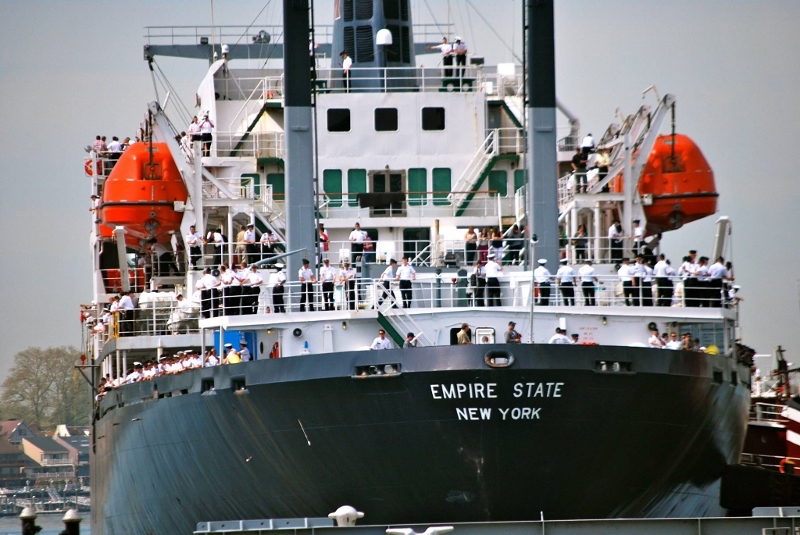As Congress began this week to scrutinize President Trump’s proposed fiscal 2019 budgets for Coast Guard and maritime programs, praise for some budget increases quickly turned into criticism related to underfunding or not funding some programs and a plan to buy secondhand “rusty old hulks” to train maritime academy cadets.
The tough words came from Democrats on the House Subcommittee on Coast Guard and Maritime Transportation, which held a hearing Wednesday to review the budgets proposed for the Coast Guard, Maritime Administration and Federal Maritime Commission.
The Trump administration wants to spend $11.65 billion, an 11% increase over the 2017 enacted level for the Coast Guard. For Marad, the administration proposed a $396.4 million budget, a 33% increase, and $27.49 million, a 1% increase for the FMC.
Members said they were pleased to finally see increases for agencies that have continually been underfunded and told to do more with less. Last year, the administration floated a 14% cut for the Coast Guard.
“But while the top line looks good,” commented Rep. John Garamendi, D-Calif., “when we get into the details, we have problems.”
The California Democrat then proceeded to question whether funds allocated to build the Coast Guard’s first heavy icebreaker in 40 years would be a one-time blip in the budget, or would money continue to flow in the future.
He also dismissed a plan in the budget to spend $300 million to retrofit “a bunch of foreign ships for the maritime academies” when new multiuse training vessels were being designed.
“We’re not going to buy a foreign-built ship and abandon the multimission vessel,” the congressman unequivocally stated, adding that it’s ironic that the president would impose tariffs on imported steel to help the U.S. steel industry but then propose buying secondhand ships for cadet training rather than using U.S. steel to build new training ships.
Later in the hearing, Garamendi again raised the issue, pushing Marad Administrator Mark Buzby, who was advocating the purchase of two secondhand vessels as the quickest way to replace the aging ships at SUNY Maritime College and Massachusetts Maritime Academy, to agree that new multimission ships “would be the very best way to go forward.”
Garamendi went on to criticize the president’s plan to build a wall on the border of Mexico, saying that the $18 billion the administration proposes for the structure would be better spent by the Coast Guard, which has been highly successful in stopping illegal drugs at sea.
“If you want to get the very best and most efficient way to stop drugs from coming into this country, it’s (with) the U.S. Coast Guard, not a beautiful wall paid for by the American taxpayers,” he said.
Rep. Peter DeFazio, D-Ore., joined in the criticism, saying while funding the polar icebreaker is positive, “there are other things that are underfunded” in the Coast Guard budget, such as helicopters and buoy tenders. Money for the border wall, he said, would be better used to “recapitalize the needs of the Coast Guard.”
Rep. Alan Lowenthal, another California Democrat, questioned the zero funding in the Marad budget proposal for new loan guarantees for the construction or reconstruction of U.S.-flag vessels in U.S. shipyards under the Title XI program.
“I thought shipbuilding was a vital industry. If this program has an important role, then why does the budget call for no new authorizations for the guaranteed loans?” asked Lowenthal.
Marad’s Buzby acknowledged that it was an important program, which has helped build some 1,900 vessels, “but it came down to funding in a difficult budget year.”
Other budget highlights include:
- With money secured from the Navy last year and another $750 million in the fiscal 2019 budget, the Coast Guard will finally be able to move forward on the detail design, construction and delivery of the first new heavy polar icebreaker, set for 2023, said Coast Guard Commandant Adm. Paul Zukunft. The budget also funds repairs that will extend the life of the Polar Star, the country’s only heavy icebreaker now in service.
- The budget calls for $135 million, a 26% increase, to renovate shore facilities and aids to navigation. The Coast Guard currently has a backlog of 95 prioritized shore facility improvement projects.
- Funds would also be provided for post-delivery activities for the seventh through ninth national security cutters, which are heavily used in national security missions, construction of the second and third replacements for the medium endurance cutters, which are well beyond their service lives, and for the new class of waterways commerce cutters, which will aid commerce along the inland waterways.
- The Coast Guard Academy will introduce a new cybersecurity curriculum next year.
- No funding is requested for the Maritime Administration’s Marine Highways grant program, assistance to small shipyards grant program or the loan guarantee program.
- Steps are underway to strengthen the sexual assault and sexual harassment prevention programs at the U.S. Merchant Marine Academy. Fiscal 2019 funding will also finance satellite communication devices that midshipmen can use during sea year training, and improvements to the sexual assault hotline.
- The $300 million for the maritime academy training ships would fund the purchase and retrofitting of two used cargo ships to replace the Empire State VI at SUNY Maritime College, and the Kennedy, now assigned to the Massachusetts Maritime Academy. Both ships are more than 50 years old and in urgent need of replacement. Buzby said his agency is casting a wide net to find suitable vessels on both the U.S. and international markets.





